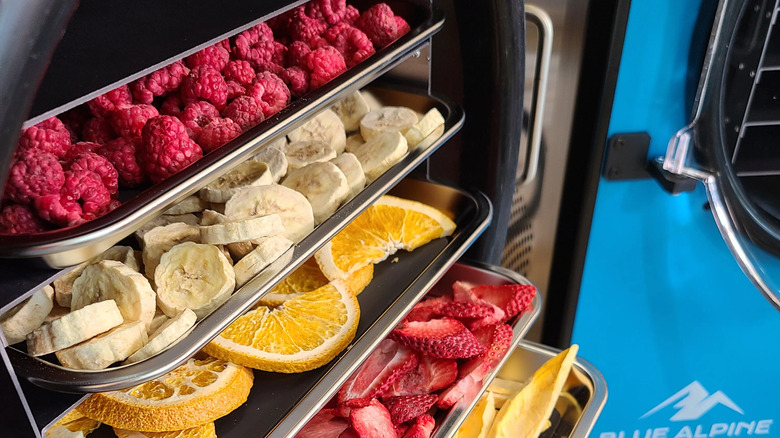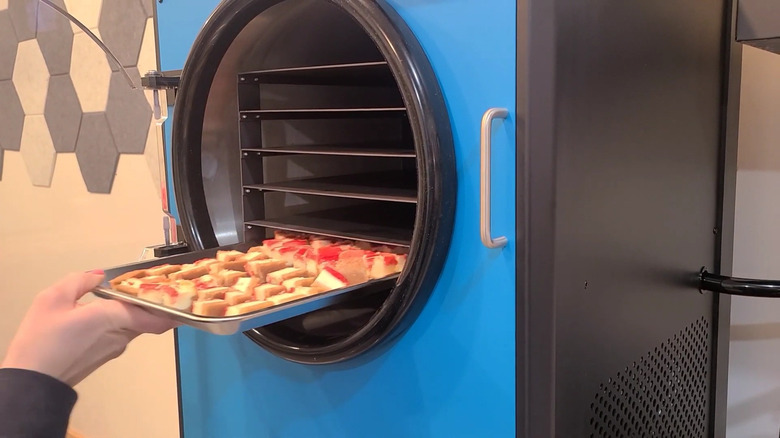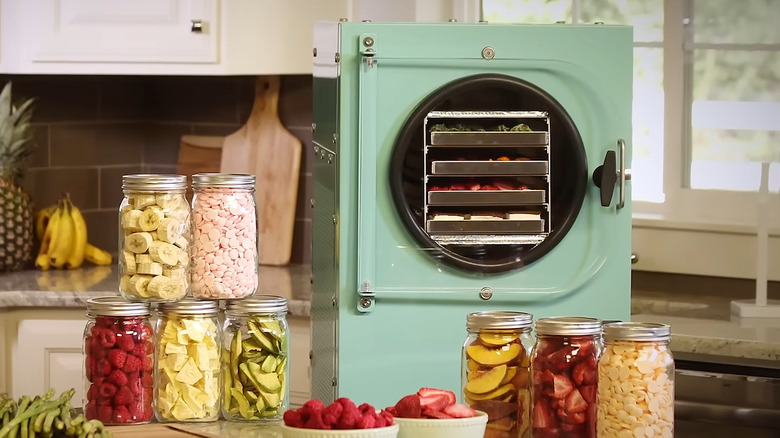How Much Freeze Dryers Typically Cost (& The Best Spot To Put One In Your Home)
For the relatively small number of people who want to dry everything from food to candy to freeze-dried wedding bouquets, there are more options all the time. Only a couple of years ago, there were just two companies selling home freeze dryers. Now there are four, and since the complexity of choices has grown by an order of magnitude, it gets confusing fast. In a nutshell, you can buy yourself a freeze dryer for just under $2,300 ... but you probably shouldn't. The average price is closer to $4,000, but the typical amount paid by consumers is probably closer to $3,000.
A lot of the confusion comes from massive dehydrators from China masquerading as freeze dryers, cheap plastic dehydrators from Amazon masquerading as freeze dryers, and companies like Home Depot and manufacturers like Kemolo selling commercial freeze dryers for home use. So it helps to know what to really expect from a consumer model. That's a noisy, heavy machine (61 to 161 pounds) that probably needs to be kept somewhere in your home rather than in a garage or outbuilding.
How much does a freeze dryer cost?
Commercial freeze dryers are all over the map, but home models currently fall into the $2,295 to 5,950 range. That gets you from the smallest capacity on the market (6 to 10 pounds) to the largest (50 pounds). There are four main players in the consumer market: Harvest Right, Stay Fresh, Prep4Life, and Blue Alpine. Their prices are pretty much in line with each other.
There are a couple of different ways of looking at what's usual for freeze-dryer prices. If you consider the cheapest machine from each manufacturer that has the closest to a mid-range 15-pound capacity, you see just how close the offerings are. The four machines average $2,996 with a range of only $2,895 to $3,095. So $3,000 is a pretty good estimate for how much a freeze dryer costs. Options and accessories can drive the price up fairly fast, and the most common and probably useful upgrade is an oil-free vacuum pump, which reduces maintenance and setup time. Harvest Right charges an additional $1,495 to $1,695 for an oil-free pump, and Prep4Life charges an extra $1,100 for their Cube model with an oil-free integrated pump.
Where should you put your freeze dryer?
Where to put such a noisy, heavy machine is at the top of most purchasers' minds, understandably. It's tempting to relegate a device like this to a garage or back porch, especially given that they tend to work in noisy 24-hour cycles. However, freeze dryers have very specific environmental requirements that require an indoor space. The room should be well-ventilated, temperature- and humidity-controlled, and ideally, a little soundproofed. The ventilation ensures that heat produced by the machine doesn't build up in the room.
Freeze dryers have operating temperature ranges around 35 to 90 degrees Fahrenheit, but 50 to 75 degrees is much better and will shorten dry times. Relative humidity of less than 50% or lower is fine, but you might struggle to get the ideal humidity in an area like a finished basement without air conditioning. An unoccupied bedroom or, of course, the kitchen would be ideal.
European 220-volt models cause some confusion about what kind of electrical circuit you need for a freeze dryer. All the consumer models from the four major brands require 110 volts. Four of the 15 models required 20-amp circuits ... meaning that they need a 20-amp breaker and 20-amp NEMA 5-20 receptacle, which looks like a normal receptacle but with a horizontal notch added to each larger neutral prong hole. The circuit must also use a 20-amp-capable 12-gauge electrical cable. Manufacturers recommend a dedicated circuit with no other things plugged in. These receptacles are among the types commonly found in most homes including exhaust fans, refrigerators, dishwashers, etc.


